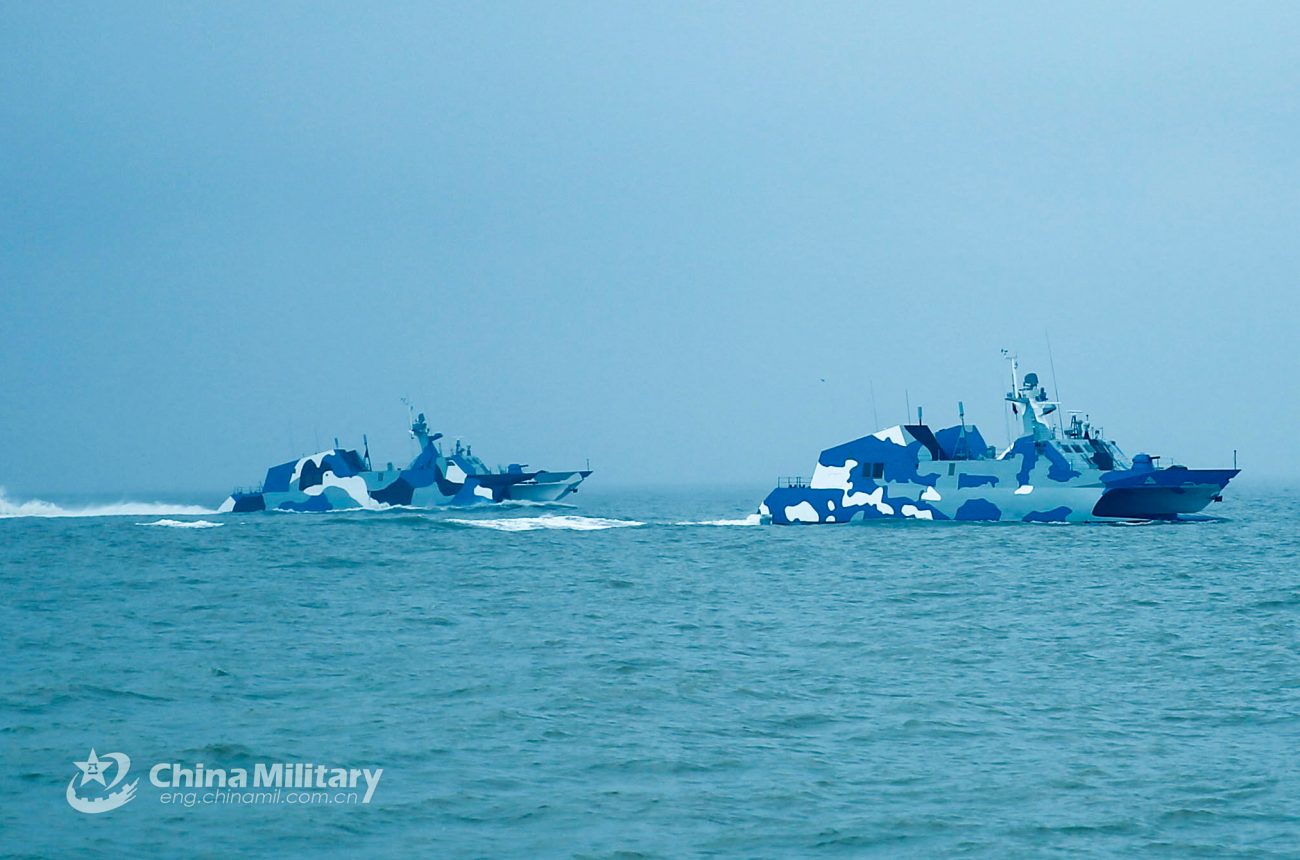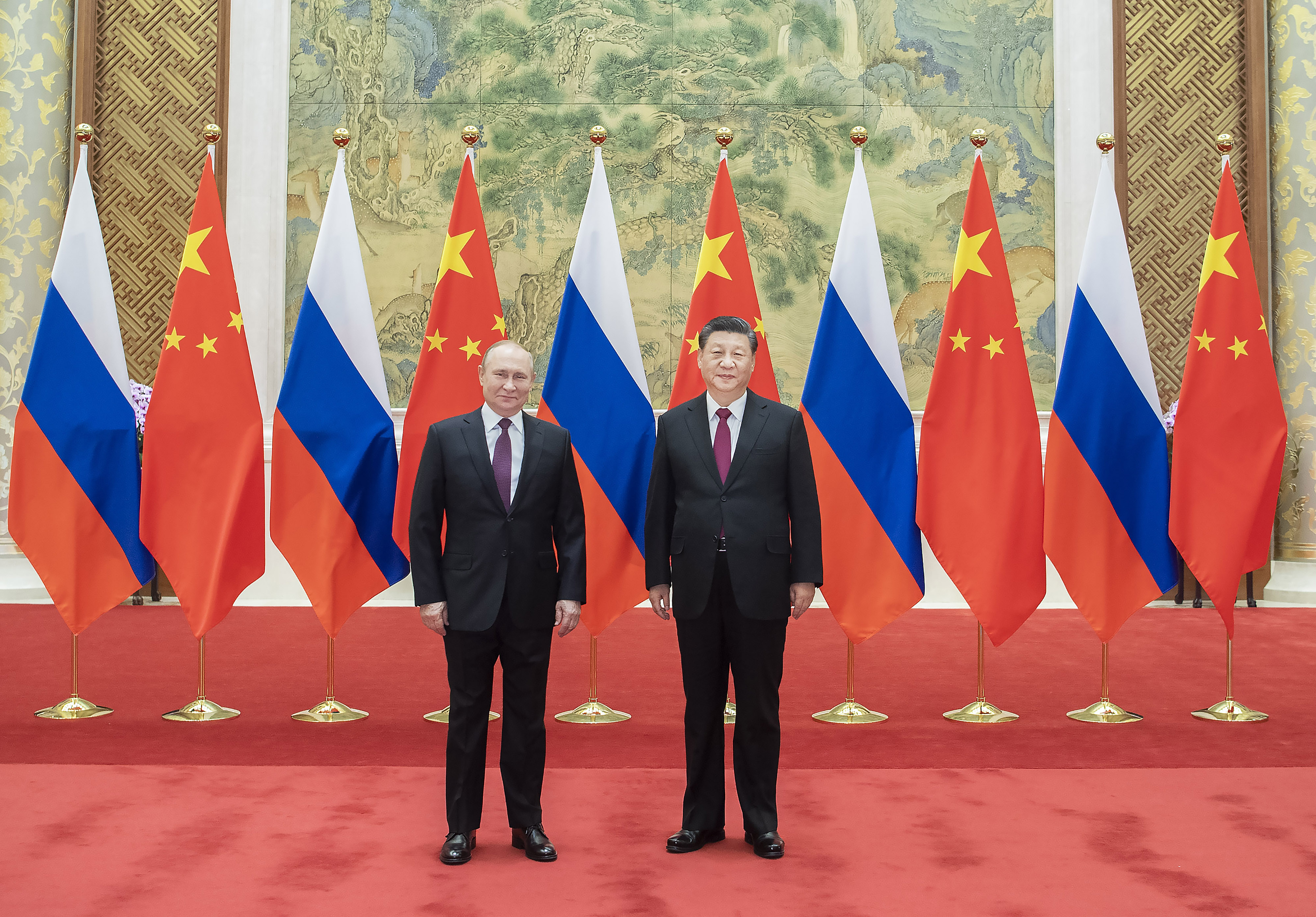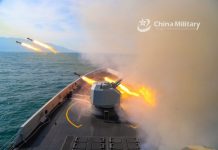Taiwan has lived with the threat of an invasion for decades, but the increase in Chinese military deployments in recent years with intensifying political rhetoric, followed by Vladimir Putin’s invasion of Ukraine last month, have heightened Taipei’s anxieties against a similar move by China.
Fearing GPS Jamming By China, US Air Force Wants To Send Extra Layer Of Satellites To The Geostationary Orbit
The looming invasion threat and China’s constant intrusions in the Air Defense Identification Zone (ADIZ) of Taiwan have necessitated that it undertakes preparation against the People’s Liberation Army (PLA) military on mission mode.
To that end and in the backdrop of the resistance posed by Ukrainian forces against Russian troops, Taiwan’s military released a civil defense manual for the first time, providing residents with survival advice in the event of a war.
China has never abandoned the use of force to subjugate Taiwan and has increased military actions in the area in recent years to pressure Taiwan into acknowledging its sovereignty claims.
It has consistently maintained that the self-ruled democratic island of about 24 million people is a rogue province that has to be ultimately reunited with the Chinese mainland—preferably peacefully, but forcefully if necessary.

The handbook published by the Taiwanese military explains how to find bomb shelters using smartphone apps, where to get water and food, and how to put together emergency first-aid kits. However, the plans for the survival handbook pre-date the launch of the Russian invasion.
“(We) are providing information on how citizens should react in a military crisis and possible disasters to come,” Liu Tai-yi, an official of the ministry’s All-out Defense Mobilization unit, told an online news conference. He stated that this would enable safety preparedness and aid in people’s survival.
He added that the handbook, which is based on similar manuals published in Sweden and Japan, would be updated with more localized information, such as the locations of shelters, hospitals, and shops for everyday necessities. This indicates that Taiwan has been closely watching the war in Ukraine where the citizens have access to underground anti-bomb shelters.
The Ministry of National Defense (MND) in #Taiwan has released a civil defense handbook aimed at teaching Taiwanese how to seek refuge in major nationwide emergencies, including a military conflict, to be better prepared for various contingencies. https://t.co/NvF8w8j1QN
— William Yang (@WilliamYang120) April 12, 2022
The manual incorporates comic strips and illustrations to provide recommendations on how to survive a military attack, such as how to recognize air raid sirens and how to avoid missiles.
It is pertinent to mention that while China has always claimed its sovereignty over Taiwan, it has become openly belligerent since Tsai Ing wen’s emphatic election victory which was treated as a referendum of her democracy campaign in 2020.
Taiwan’s manual is one of the several efforts against a Chinese invasion that it believes could happen at any time.
Will China Invade Taiwan?
Taiwan has not detected any signs of a Chinese invasion in the works as of now. In fact, military experts and china watchers have predicted that as a result of Russia’s troubles in Ukraine, China is more likely to reassess or postpone any scenario of aggression including against Taiwan.

Some experts believe that Taiwan’s role in the global technology supply change, especially the silicone that it uses to manufacture semiconductors is a deterrent against a Chinese attack. China heavily relies on Taiwan’s technology to power key industries that it has been banking on to double its GDP by 2035.
However, Taiwan has increased its alert level since the start of the Ukraine war, which Moscow refers to as a “special military operation.” Even in the days leading to the Russian attack on Ukraine, Chinese President Xi Jinping has reaffirmed his sovereignty over Taiwan in a meeting with Russian President Vladimir Putin.

As a result, President Tsai Ing-wen has sworn to defend the island and is currently leading a large-scale modernization effort to make the island’s military more mobile and hard to attack.
The invasion of Ukraine has taught people in Taiwan a valuable lesson: a smaller force can resist and even fight back against a larger invading force. Residents of Taiwan believe that they shouldn’t rely on outsiders to survive, citing the lack of foreign boots on the ground in Ukraine and early delays in coordinating sanctions and other actions as examples, according to The Guardian.
In 1995, China’s government vowed to attack Taiwan. Thousands of Chinese troops had gathered in Fujian, the province directly over the Taiwan Strait.
Only until President Clinton inundated the strait with American warships was the provocation thwarted. It was then established that a war with Taiwan would lead to a broader battle with the US. However, that might not be true in 2022.
How Is Taiwan Preparing Against An Invasion?
Taiwan has spent billions of dollars on armaments from the United States and bolstered its foreign alliances and collaborations. It is revamping its reservist program, with the Defense Minister announcing a return to a full year of conscription for young Taiwanese men.
It is eliminating a non-military public service alternative that many had sought out as a less onerous term. In addition, to increase the term of conscription, there are active training programs taking place in Taiwan for common Taiwanese citizens to impart training in skills ranging from first aid to firing.
In November last year, Taiwan inducted 64 F-16 Viper aircraft that it bought from the United States. Additionally, Vice Defense Minister Alex Po announced on April 11 that Taiwan is considering purchasing soon-to-be-retired US Navy littoral combat ships, according to Taiwan News.
It is developing its own indigenous submarine which is supposed to be launched by 2023.

Last month, Taiwan’s defense ministry said in a report that it plans to more than double its annual missile production capacity to close to 500 this year as it beefs up its fighting force in the face of what it perceives as China’s growing military threat.
It is also geared up to buy an advanced American air defense system. Last week, the Pentagon said that it had received approval from the US State Department for a probable $95 million contract with Taiwan.
China has warned against any such deal, as previously reported by the EurAsian Times. Beijing has also taken a strong exception to a visit to Taiwan by US House Speaker Nancy Pelosi.
The #US has approved the sale of the Patriot weapons system for #Taiwan worth $95 million, making #China see red. The Pentagon told the Congress that the comprehensive deal includes training, deployment, maintenance of the Patriot Air Defence System. pic.twitter.com/ngV2JgXVNp
— IANS (@ians_india) April 8, 2022
In a biennial military strategy report released in 2021, the Taiwanese Ministry of National Defense stated that it intends to use the Taiwan Strait’s natural barrier as a force multiplier, with the military increasing weapon ranges to put Chinese airfields, ports, and assembly areas directly across the waterway within reach, forcing Chinese troops to assemble further away and lengthening their sea transit.
Not just this, Taiwan has also been conducting military drills in a mission mode to gauge its own power and rehearse military operations. A few days ago, The EurAsian Times had reported that Taiwan’s military was training using US-made Javelin missiles to see how successful they are at deterring future mainland Chinese strikes, after the success reported from Ukraine.
However, it has now gone a step further. In an unprecedented development, Taiwan simulated a PLA attack and conducted air drills for two hours in the wee hours of April 12. This indicates the preparation that is underway in Taiwan as the war drags on more than 5000 kilometers away in Ukraine.
Even though there is no evidence to suggest that China would launch an invasion of Taiwan any time soon, the latter remains aware of the possibility and is deeply invested in bolstering its military capability and training its human resources.
- Contact the author at sakshi.tiwari9555@gmail.com
- Follow EurAsian Times on Google News




